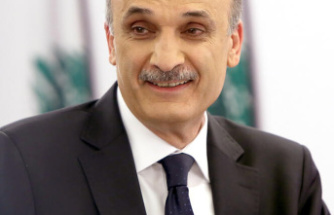In the Plaza de Trafalgar in London is an imposing equestrian statue in bronze. It represents Carlos I, King of England, Scotland and Ireland from 1625 to 1649, when he was executed during the English Revolution for opposing the democratic changes that the people demanded. In fact, the statue of him looks at the street where he was decapitated.
Carlos I is not considered any hero, the opposite. «But the statue of him is not there for us to admire him. It is there to remind us that sometimes violence is necessary, that sometimes to carry out the political changes we want to kill a king. It is there to remind us what we did, to reaffirm ourselves in it and know that we do not regret, so that we do not forget that sometimes progress requires killing people. "
He says it without ripping Mary Beard, the best known (and reputed) specialist in the classical world, professor in Cambridge, awarded the Princess Award of Asturias of Social Sciences in 2016 and author of several books on Greece and Rome. The last one takes twelve Césares title. The representation of power from the ancient world to the present (critical) and in it analyzes - over more than 400 pages, with profusion of photos and of bibliography - how for 2,000 years ago, princes, heads of government and leaders In general, they have used the canons of representation of the emperors of ancient Rome, and especially their marble busts, to sculpt their own public image.
So the book, as erudite as Amenus, also deals with a particularly sensitive issue these days: the statues of the powerful. A topical matter after the protests of the Black Lives Matter movement have led to attacks against monuments of several historical characters accused of being a symbol of oppression and having defended racist positions.
"I think we think very closely about what to do with statues. Some, of course, have to be removed. Nobody wants a Statue of Hitler or a slave trafficker. When, for example, a Statue of Jimmy Savile, a famous disc jockey and television presenter that had sexually abused hundreds of children, nobody protested. But there are other statues that force us to think why they are there, and that generates a positive and constructive debate. There are statues that show us what you do not have to be, what a monarch or ruler can not do ».
And not only that. Beard, born in 1955 in the British town of Much Wenlock, considers that, if we get very thin, very few statues would survive. After all, even against these kings and leaders who have gone down to history as capable and competent can be argued that they considered that their power emanated from divine law and that they were macho. "I think we should actually look at ourselves more carefully. Because, what about our current heroes will be knocked down within 150 years? "He launches the Cambridge's classic professors' professors, which next year will retire after more than four decades teaching at that university.
The ancient Romans reveals Beard, had much more imaginative ways than us to deal with the statues of denyed characters. To a statue could for example change the face. "They saw the statues as work in progress that could be altered. But I often think that we intend that the ancient Romans give us more lessons than they can actually give us, "he stands out.
Mary Beard is aware that we are currently trapped in a battle about whether some statues should be removed or should be left. "But there are other things that can be done with them," she says. "A statue can be go down for example from its pedestal, it can be placed at the same level in which we are the others. But we have to resist autocompliance, to think that our morale is good and that others have to be cut to others. Because that is exactly what Roman emperors did, quite terrible people in general. "
However, in the Brown University, in the United States, a group of students asked for a statue of Julio César and another from Marco Aurelio withdrawn from the campus, considering that they represented white supremacy. The proposal did not prosper. Beard prefers to focus it with positivity. "They realized that in the statues there is an ideology, they are not only decorative objects. Those statues are there for something, if Mussolini decided to represent himself in the way of Julio César or Augusto is for something. Statues are not neutral, and it is very good that we react to them. But another thing are the opinions of people, sometimes not entirely well informed, who consider all the people of past bad ".
But not only the statues are in the spotlight. At a Massachusetts institute, it was recently left to recommend the reading of the iliado and the Odyssey to consider that it is violent and macho works. What do you think about a student of the classics like Mary Beard?
"I think that here in Spain, as in England and in most European countries, it is being discussed how much classical culture should continue to impart, especially in secondary education. It seems to me that it is to have very little vision to say that you do not have to study the classical culture because it took place 2000 years ago and today is dead, and that instead you have to teach the technology kids. I think doing that is culturally disembodder. If in the current world we want for example to think about what a person is, a human being, in the very notion of person, those who constitute the most time of all time, we can not do it without going back to Plato. If we lose our connection to the classic world, we will lose the ability to speak in depth of things that interest us. If we lose the connection with these people of antiquity, we will not be able to understand our own world. "
The influence of the classical culture is palpated in fact in our daily life. The month of August is called by Augustus, and July by Julio César, for an example. "We continue to live under the influence of those guys. And if we continue living under his influence, we would be stupid if we did not study them and we did not try to understand them. "
Also as regards power, the classics have given us a way of representing it and understanding it. Until the mid-nineteenth century, as Beard reveals in Him's new book, it was usual for the powerful to be dressed with togas for important acts. And there are also the coins with the effigy of a king or ruler: Julio César was the first to coin coins with the image of him.
"When I look at the coins with the effigy of our queen, Isabel II, I recognize the person in them. But, on the other hand, I think she does not have that aspect in real life, "Beard confesses. And the same thing happens with Julius Caesar, who is unknown which was actually the aspect of her.
Nowadays, with disembarkation above all of photography, the representation of power is evident that it has changed. But, in reality, it is still inherited from that of Imperial Rome. "The representation of power today is different, yes, but somehow replicates the time of the Caesars. You just have to see the photos of the electoral campaigns: the portraits of the candidates seek that they seem young, but not excessively, they usually look directly at the Chamber, try to convey calm, serenity and security. They wear jacket costumes instead of Togas, but otherwise they do not seem very different from these types, "he says as he encompasses the busts and classic statues of the sculpture room of the Prado Museum, where he quoted the world for this interview.
Date Of Update: 28 October 2021, 20:55











